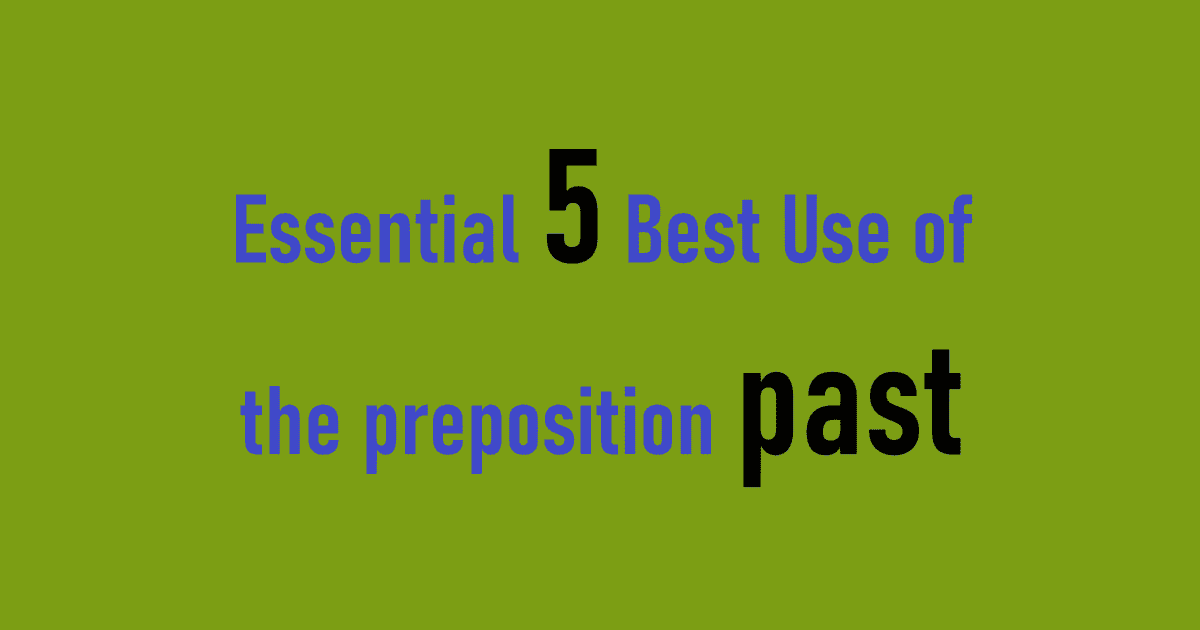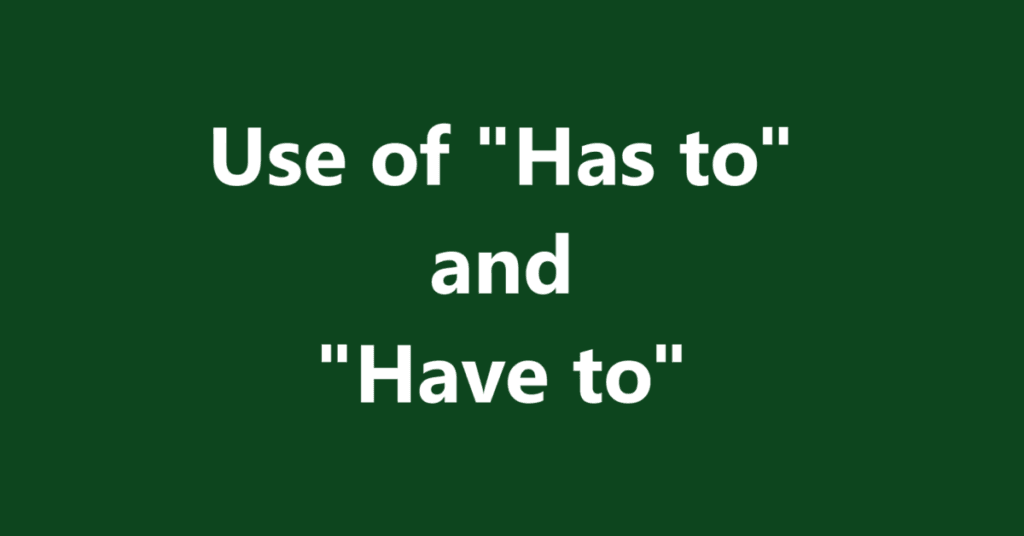Use of the preposition past. The word “past” is a chameleon of the English language, capable of being a noun, an adjective, an adverb, and, importantly, a preposition. While we often think of the past as a period in time, using “past” as a preposition allows us to describe position, direction, and sequence in relation to a specific point or landmark. This post dives deep into the various uses of “past” as a preposition, offering clarity and examples to help you master this versatile word.
Use of the preposition past
Understanding “Past” as a Preposition: The Basics
At its core, “past” as a preposition indicates movement, position, or location beyond a specific point, either in space or time. It signifies a traversal, surpassing, or exceeding of something. Unlike prepositions like “through” or “around,” “past” implies a linear trajectory, typically moving from one side of the reference point to the other.
Key Areas of Usage:
Let’s break down the different ways “past” is used as a preposition, categorizing them for easier understanding:
1. Indicating Movement and Location Beyond a Physical Point:
This is perhaps the most common usage. “Past” describes the act of moving beyond a fixed point in physical space.
- Examples:
- “The train sped past the station.” (The train moved beyond the station’s location.)
- “Walk past the library, and you’ll see the bakery on your right.” (Instruction to walk beyond the library’s physical location.)
- “He drove past the accident site without stopping.” (The driver continued moving beyond the location of the accident.)
- “She ran past the finish line, not realizing she had won.” (She moved beyond the finish line’s location.)
- “We flew past the mountain range, enjoying the breathtaking view.” (The airplane moved beyond the mountain range.)
2. Expressing Time After a Specific Hour:
“Past” is frequently used to indicate a time that is after a particular hour but before the next. This is a common way to tell time in informal contexts.
- Examples:
- “It’s ten past three.” (It is ten minutes after 3:00, or 3:10.)
- “The meeting starts at a quarter past nine.” (The meeting starts fifteen minutes after 9:00, or 9:15.)
- “Let’s meet at half past six.” (Let’s meet thirty minutes after 6:00, or 6:30.)
- “It’s only five past eight, so we have plenty of time.” (It is only five minutes after 8:00, or 8:05.)
- “She arrived at twenty past ten.” (She arrived twenty minutes after 10:00, or 10:20.)
3. Indicating a Limit or Boundary that Has Been Exceeded:
“Past” can denote that a certain limit or threshold has been surpassed. This applies to both physical quantities and abstract concepts.
- Examples:
- “The temperature soared past 100 degrees Fahrenheit.” (The temperature exceeded the limit of 100 degrees.)
- “His debts climbed past his ability to repay them.” (His debts exceeded his financial capacity.)
- “Her patience stretched past its breaking point.” (Her patience exceeded its limit.)
- “The runner sprinted past his personal best time.” (The runner achieved a time faster than his previous record.)
- “The project went past its original budget.” (The project’s expenses exceeded the allocated budget.)
4. Describing Movement or Existence Beyond a Certain Age or Stage:
This usage applies to indicating that someone or something has progressed beyond a particular age or stage of development.
- Examples:
- “He’s well past retirement age.” (He is older than the typical retirement age.)
- “The milk is past its expiration date.” (The milk has expired and is no longer safe to consume.)
- “She’s past the point of caring what others think.” (She is at a stage where she no longer worries about other people’s opinions.)
- “The project is past the planning stage and now in development.” (The project has moved beyond the planning phase and is actively being developed.)
- “This technology is past its prime.” (This technology is outdated and nearing the end of its usefulness.)
5. Figurative Usage: Ignoring or Disregarding Something:
In a more figurative sense, “past” can be used to imply that someone is choosing to ignore or disregard something, often an insult or criticism.
- Examples:
- “She just brushed his rude comment past and continued with her presentation.” (She ignored his comment and proceeded.)
- “He tried to put the embarrassing incident past him and focus on the future.” (He tried to forget the incident and move on.)
- “We should just let his negativity roll past us.” (We should ignore his negativity.)
- “She was able to put the trauma of her childhood past her and build a successful life.” (She overcame the trauma and moved forward.)
Distinguishing “Past” from Similar Prepositions:
It’s essential to differentiate “past” from other prepositions that might seem similar, such as “by” and “beyond.”
- “Past” vs. “By”: Both can indicate proximity, but “past” typically implies movement across a point, while “by” indicates being near or alongside a point.
- Example: “He walked past the house” (He moved beyond the house). “He walked by the house” (He walked near the house, possibly on the same street).
- “Past” vs. “Beyond”: While often interchangeable, “beyond” often suggests a greater degree of separation or a more abstract concept. “Past” tends to be more literal in its sense of surpassing a point.
- Example: “The mountains are past the river.” (Literal, physical location.) “The mountains are beyond my wildest dreams.” (Figurative, abstract concept.)
Common Mistakes to Avoid:
- Confusing “Past” with “Passed”: “Passed” is the past tense of the verb “to pass.” Ensure you use the correct spelling depending on whether you’re using it as a preposition or a verb. Example: “They walked past the store” (preposition). “They passed the exam” (verb).
- Incorrect Usage with Time: Remember, when using “past” to tell time, it always refers to minutes after the hour. Avoid saying things like “It’s ten minutes to past three.”
Conclusion:
“Past” is a valuable preposition that, when used correctly, adds precision and clarity to your communication. By understanding its various uses, from describing physical movement to expressing time and exceeding limits, you can enhance your English proficiency and avoid common errors. Remember to consider the context and the intended meaning to ensure you’re using “past” accurately and effectively. This guide offers a comprehensive foundation for navigating the intricacies of “past” as a preposition, enabling you to confidently use it in your everyday conversations and writing.
Read Also,
- Learn all prepositions
- Use of the preposition above
- Use of the preposition about
- What is Religion
- News in Hindi
- Human vs AI
- Very Important Word Lists
>>> Sir Sahil


